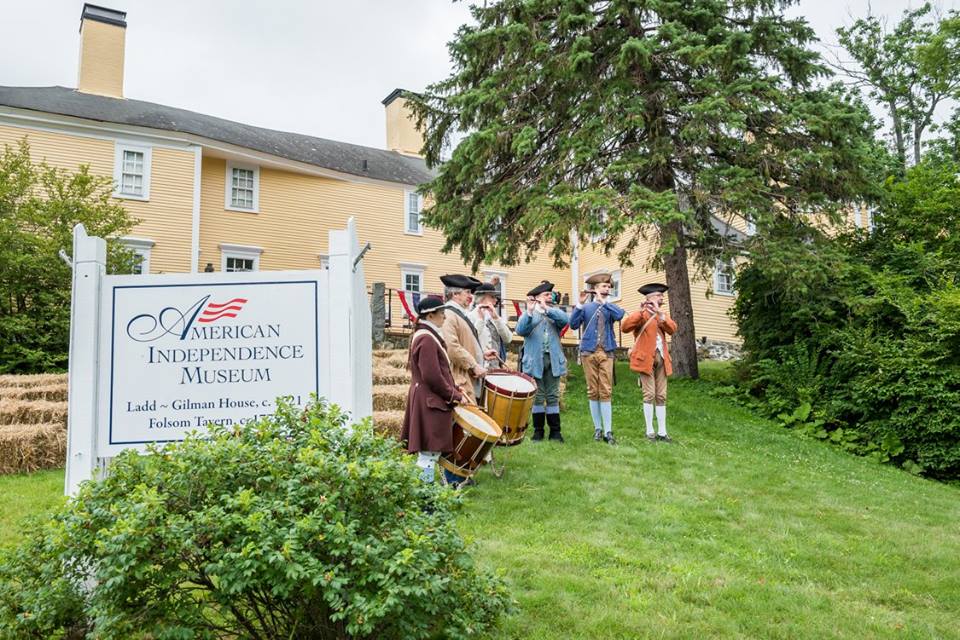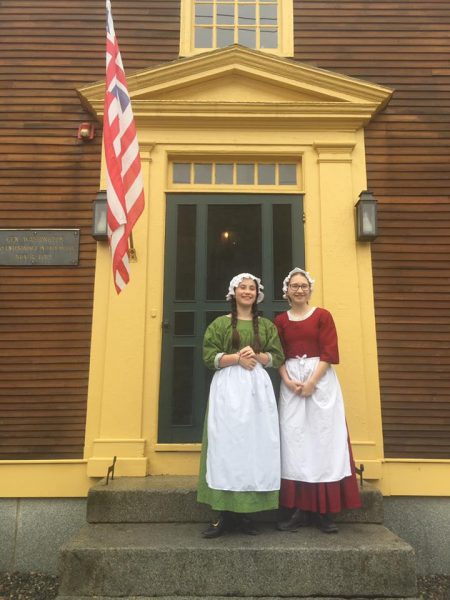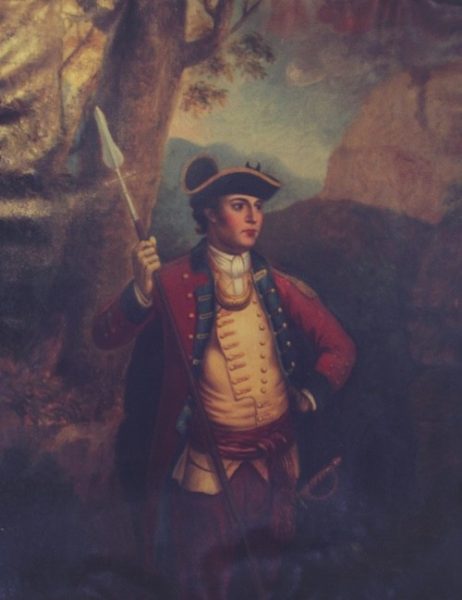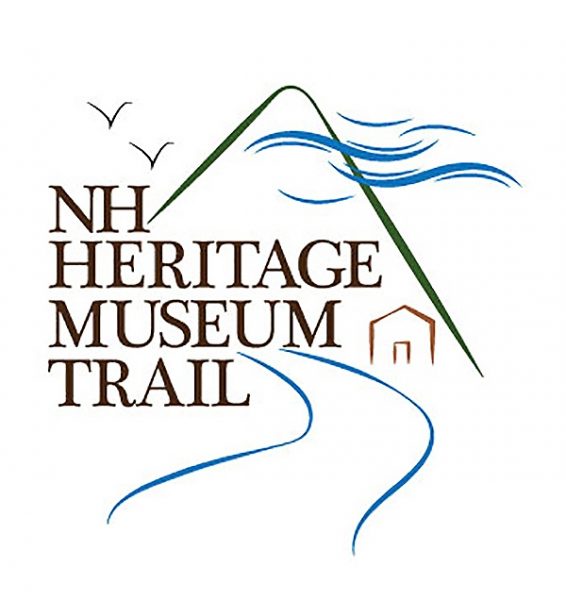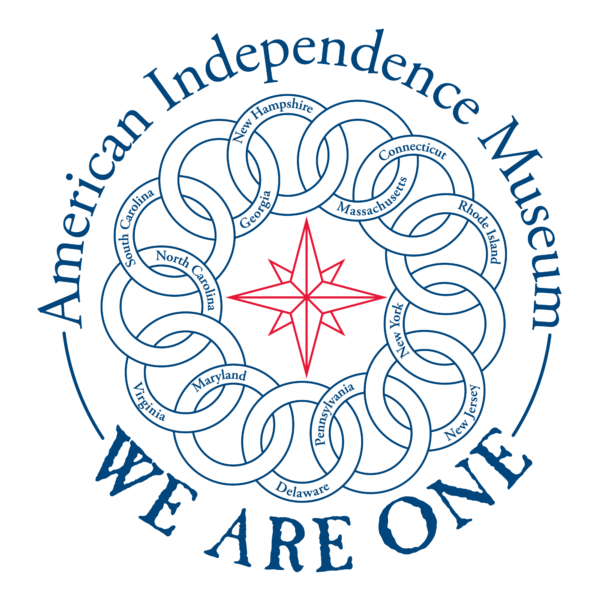Our History
Ladd-Gilman House
The Ladds and Their Brick House
In 1714, Peter Coffin, Sr. gave all his land to his grandson, Eliphalet Coffin, including the hill overlooking the Squamscott River where the Ladd-Gilman House sits today. It is believed that this land was in Peter’s possession as early as 1690. By 1721, Eliphalet Coffin sold part of his land to Nathaniel Ladd, who builds a brick house for his residence. Nathaniel lived here until the 1738 when he deeds his house to two of his sons, Josiah (who received the western half) and Elias (who received the eastern half).
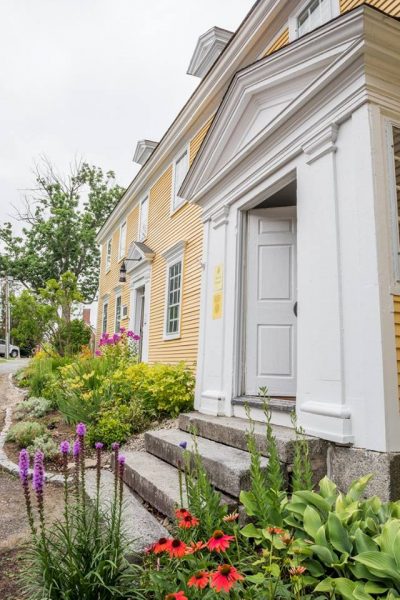
1740's - 1770's
In 1747, Elias Ladd sold his eastern half of the house to Colonel Daniel Gilman, a farmer and trader. Sometime around 1750, Daniel began major renovations to the brick house, adding an addition off to the east, adding decorative features in several rooms, and changing the layout the western side of the house. Daniel then gifted his half of the house to his eldest son Nicholas Gilman and his new bride Ann Taylor, possibly as a wedding present. It was at this time the brick house was covered in clapboards; as the new addition was constructed out of wood, covering the entire building with clapboard made in uniform in appearance.
Josiah Ladd continued to own the western side of the house for another 30 years, but it is unclear if he live in the house with the Gilman family as he owned several other properties in the area. In 1773, Josiah gave his half of the house to his son Samuel, who deeded it to Nicholas Gilman in 1777.
Gilman's Home
After John Taylor, the Ladd-Gilman House was occupied by various relatives. The last Gilman descendant to own the house was John Taylor Perry, who lived in the house from 1883 until his death in 1901. The Society of the Cincinnati, a fraternal organization started in 1783 for Continental officers, bought the house in 1902. Adding a caretaker’s cottage in 1905, the Ladd-Gilman House became their meeting place and club house.
Founding of a Museum
In 1990, the two parties came to an agreement that saw the creation of the private, non-profit American Independence Center with the aim of keeping the document in the public trust. In 1991, the American Independence Museum opened its doors with a mission to bring the American Revolution to life and to share the role New Hampshire played in the fight for independence.
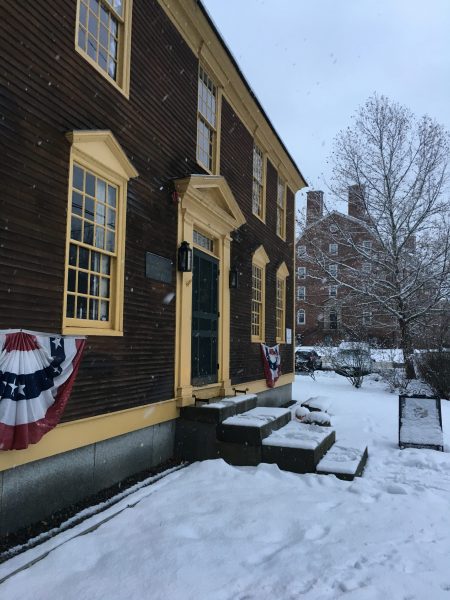
The Folsom Tavern was built by Colonel Samuel Folsom in 1775 in the center of downtown Exeter, where Me and Ollie’s is today. Taverns often were converted private homes, but Samuel constructed his building to be a centerpiece of the town, with high ceilings, large windows, and elegant details. Located in the center of town at the start of the American Revolution, it is no doubt that Samuel’s tavern played a major role in hosting government meetings and visiting politicians.
Famous Visitors
Widow Folsom's Tavern
The Tavern's Many Moves
After his death in 1896, he gave the building to his acquaintance Elizabeth Ewer. She, along with renting the building to tenants, rented the basement space to a Chinese laundromat, wait station for the trolley, and the restaurant Washington’s Lunch.
In 1909 Elizabeth Ewer sold the Folsom Tavern to John Scammon and in 1929 Scammon sold the property to Stanford Oil Company, who slated the Tavern for demolition to make way for a gas station. Protests by Dr. Edward Otis on the loss of such a building led Scammon to sell it to the Society of the Cincinnati who, in the same year, move the Tavern to their property alongside the Ladd-Gilman House where our Spring Street parking long is currently located.
The Tavern sat vacant until 1947 when Foster and Martha Stearns occupied the building who offered to renovate and caring for the home in exchange for free rent. They worked to remove 1860s decorative features while making it a livable space, adding modern bathrooms and a modern kitchen. After the Stearns moved out in 1957, the Society leased the Tavern to Philips Exeter Academy to house their faculty.
Tavern Today
In 1783, the Society of the Cincinnati was formed at the recommendation of Henry Knox who called for an institution of friendship among Revolutionary officers. These men swore allegiance to preserve the memory of their struggle and the freedoms for which they fought. The Society sought to perpetuate the friendships created among the officers during the war and offered financial support to officers who had neglected their personal businesses for the sake of the war effort. In total, 14 chapters were founded: 13 for each of the original colonies and one for France.
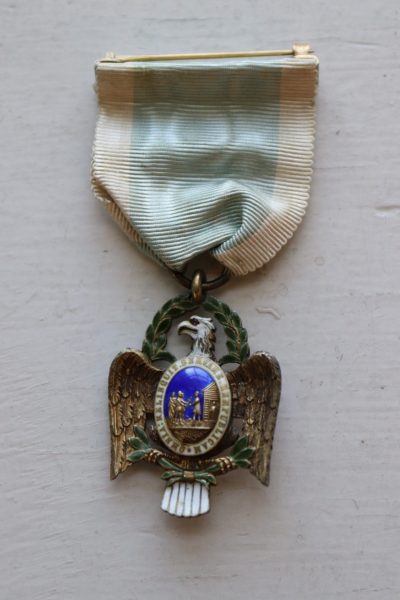
Why Cincinnati?
Many of the Founding Fathers’ convictions about republican government came from the Greco-Roman world. Cincinnatus was the archetypal virtuous republican to both the Romans and American Revolutionaries. Consequently, the parallels between Cincinnatus and George Washington were not lost on his peers. Washington, once the Revolutionary War concluded, relinquished his authority and became a private citizen and returned to his farm.
Although he was exceedingly popular, as president he refused to run for a third term and once again returned home. Washington and Cincinnatus also led their respective armies without pay.
The Society of the Cincinnati of the State of New Hampshire
In the tavern, the New Hampshire Society elected its first president general of the chapter, Brigadier General John Sullivan. Sullivan served as governor of the state of New Hampshire, as well as New Hampshire’s first federal judge. Although a member since 1783, it was not until 1790 that he received his certificate of membership to the Society of the Cincinnati.
Another original member of the New Hampshire Society was Nicholas Gilman, Jr. As a captain in the Revolutionary War, Gilman served on Washington’s staff. After the war, Gilman participated in the Constitutional Convention in 1787. He was also a New Hampshire congressman, senator, and signee of the Constitution.
Anderson House
Address
1 Governor's Ln.
Exeter, NH 03833
Get Directions
Contact Us
(603) 772-2622
[email protected]

